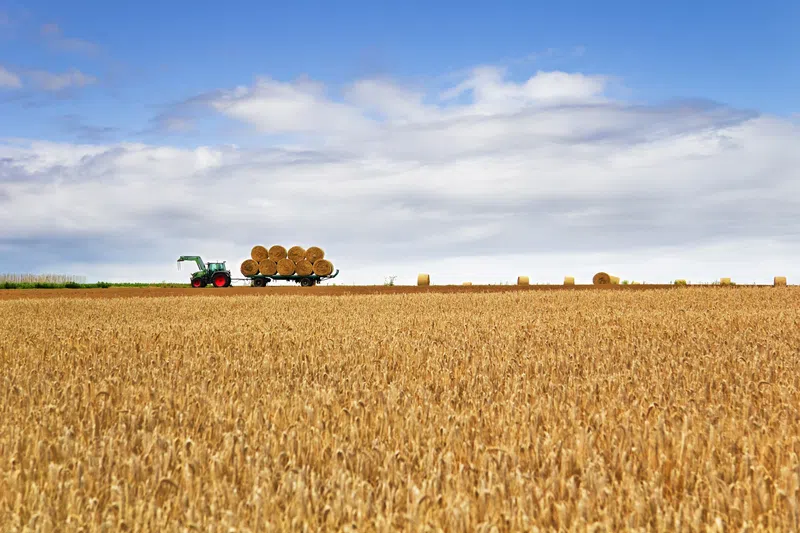As of Sept. 16, harvest in the North West Region is moving along well, with dry peas completed and canola at 23 per cent complete.
That’s according to the latest crop report from Agriculture Financial Services Corporation (AFSC) and the Government of Alberta.
Harvest for major crops are 59 per cent complete, well above the five-year average of 35 per cent.
Prolonged dryness has reportedly further reduced moisture levels, with surface (sub-surface) conditions currently rated 43 (48) per cent poor, 32 (31) per cent fair, 26 (21) per cent good, and none rated excellent or excessive across the region.
Meantime, pasture (tame hay) conditions are rated 42 (40) per cent poor, 40 (42) per cent fair, 18 (19) per cent good, and zero (zero) per cent excellent.
Across the province, progress for major crops has reached 59 per cent complete, up 20 per cent from the week previous. This is above the five- and 10-year averages of 52 per cent and 41 per cent, respectively.
Regionally, the South is furthest ahead with 67 per cent of major crops harvested, followed by the Peace Region at 61 per cent. The North West and North East Regions are at 59 and 56 per cent complete, respectively, while the Central Region stands at 53 per cent.
The report notes provincial harvest progress for major crops (week over week change) is 98 per cent (+8) complete for dry peas, 75 per cent (+26) for spring wheat, 75 per cent (+22) for barley, 63 per cent (+23) for oats, and 28 per cent (+14) combined for canola. While canola has the most remaining to be harvested, 33 per cent has been swathed.
Widespread dryness continues across the province with little to no rainfall in recent weeks. While this has supported harvest progress, the AFSC says it has reduced moisture reserves in the North East, North West, and Peace Regions, where moisture stress has persisted throughout the growing season. In the South and Central Regions, moisture loss has been further intensified by high daytime temperatures and persistent warm winds. As a result, provincial surface moisture is currently rated as 29 per cent good to excellent, below the five-year average of 43 per cent.
Regionally, surface (five-year average) moisture rated as good to excellent is 28 (27) per cent in the South, 40 (45) per cent in the Central, 14 (54) per cent in the North East, 26 (53) per cent in the North West, and 34 (55) per cent in the Peace.
Provincially, sub-surface moisture is rated as 31 per cent good to excellent, below the five-year average of 38 per cent. Regional sub-surface (five-year average) moisture rated as good to excellent is 30 (17) per cent in the South, 49 (40) per cent in the Central, 14 (50) per cent in the North East, 21 (53) per cent in the North West, and 33 (54) per cent in the Peace.
According to the report, pasture conditions rated as good to excellent have declined across the province compared to the previous week. The prolonged hot, dry weather has led to a widespread moisture stress, which in turn has slowed pasture regrowth in some regions.
Current good to excellent pasture conditions (five-year averages) are 32 (31) per cent provincially, 35 (19) per cent in the South, 42 (39) per cent in the Central, 14 (30) per cent in the North East, 18 (36) per cent in the North West, and 26 (43) per cent in the Peace Region.
Similarly, provincial tame hay conditions rated good to excellent have declined to 26 per cent, below the five-year average of 35 per cent. Regionally, tame hay conditions (five-year averages) rated good to excellent are 31 (19) per cent in the South, 40 (42) per cent in the Central, 10 (28) per cent in the North East, 19 (41) per cent in the North West, and 24 (43) per cent in the Peace. Poor regrowth following the first cut has been a challenge in most areas, especially where second cuts were minimal due to recent dryness, the AFSC and Alberta government report.










Comments